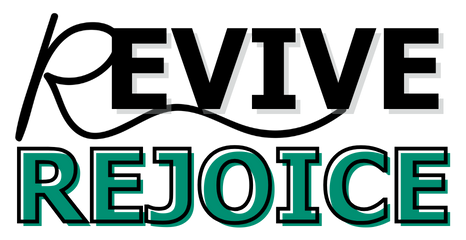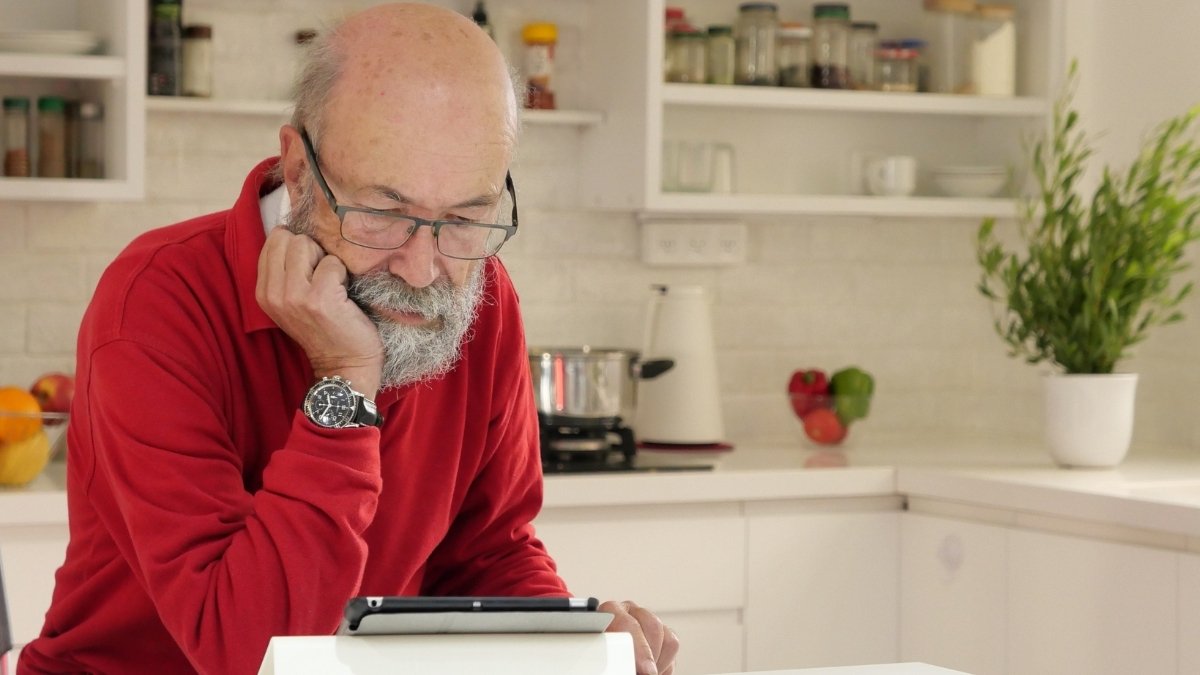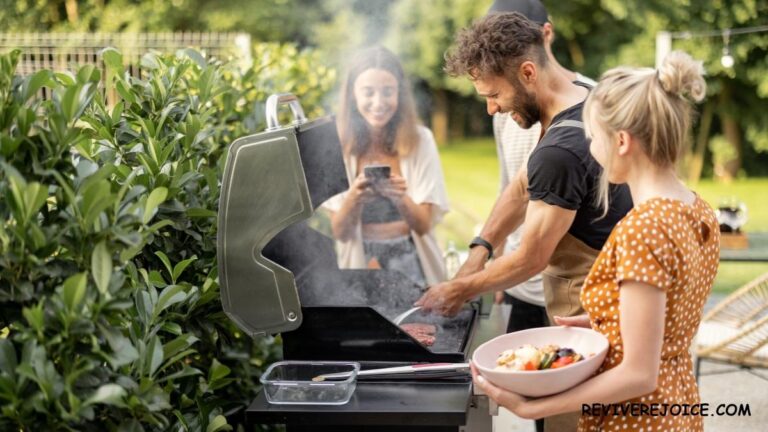Worst 11 Foods for High Blood Pressure After 40: Avoid These
If you’re over 40 and managing high blood pressure, your next meal could be working against your medication.”
Many people don’t realize that certain everyday foods can significantly spike blood pressure, making their condition harder to control despite taking medication.
11 specific foods that cardiologists warn against, why they’re particularly dangerous for people over 40, and what to choose instead.
Why Diet Matters More After 40
Blood Pressure Control Changes Everything
Blood Pressure Awareness by Age
Under 40
Lower awareness = Hidden danger
Ages 40-59
Higher awareness = Critical action needed
3 Ways Your Body Changes After 40
Salt Processing Slows
Kidneys don’t flush sodium like before. Extra salt stays longer, pulling more water into blood vessels.
Arteries Stiffen
Blood vessels lose flexibility. Your heart works harder to push blood through stiff arteries.
Food-Drug Interactions
Medications work differently with food. Some foods block pills, others make them too strong.
Your 3-Step Defense Plan
The 11 Worst Foods for High Blood Pressure Over 40
Your blood pressure numbers keep creeping up. Your doctor mentions “watching your sodium.” But which foods are the real troublemakers?
After age 40, your blood vessels get stiffer. Your kidneys don’t flush out sodium as well. This means the foods you ate without worry in your 20s can now spike your blood pressure.
Here are the 11 worst foods for hypertension – and what to eat instead.
1. Processed Deli Meats
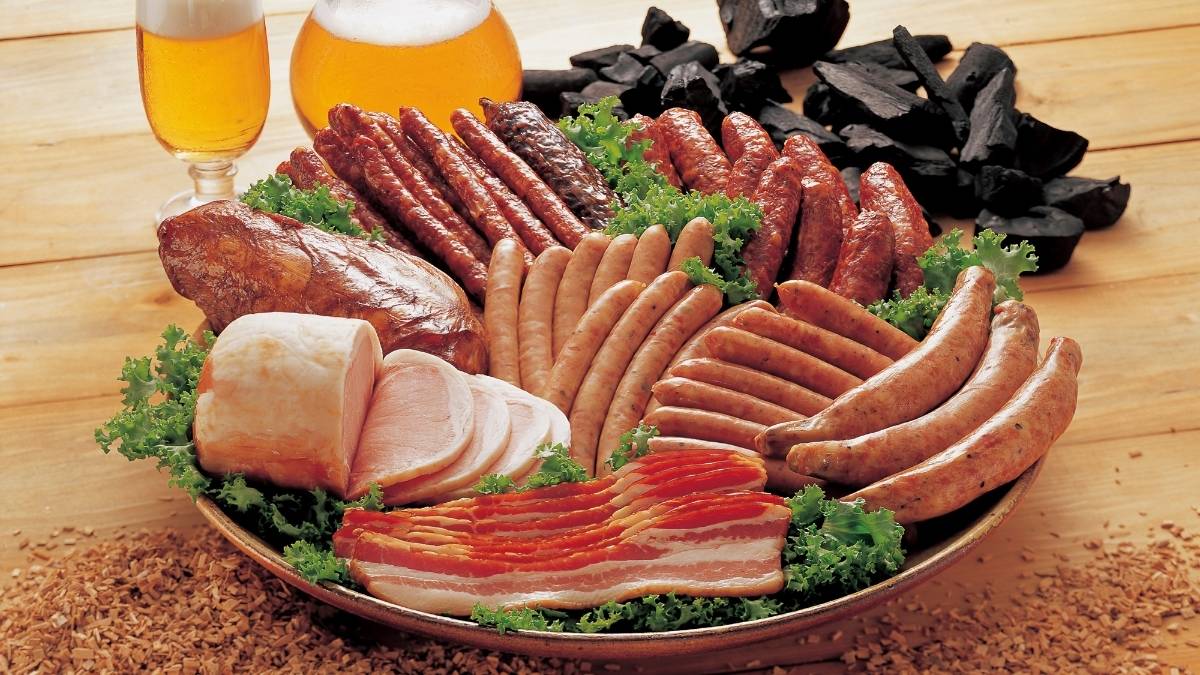
That turkey sandwich seems healthy. But processed deli meats pack more sodium than you’d expect.
Three slices of deli turkey contain about 1,050 mg of sodium. That’s nearly half your daily limit in just the meat. Add bread, cheese, and condiments, and you’re over 1,500 mg for one sandwich.
Better choices: Cook a whole chicken or turkey breast on Sunday. Slice it for the week. Or buy “no salt added” deli meats. Yes, they cost more. But your arteries will thank you.
Canned tuna in water has only 40 mg of sodium per serving. Rotisserie chicken breast (without the skin) gives you protein without the processing chemicals.
Quick tip: If you must buy deli meat, ask them to slice it fresh. Pre-sliced packages often have more sodium added.
2. Canned Soups
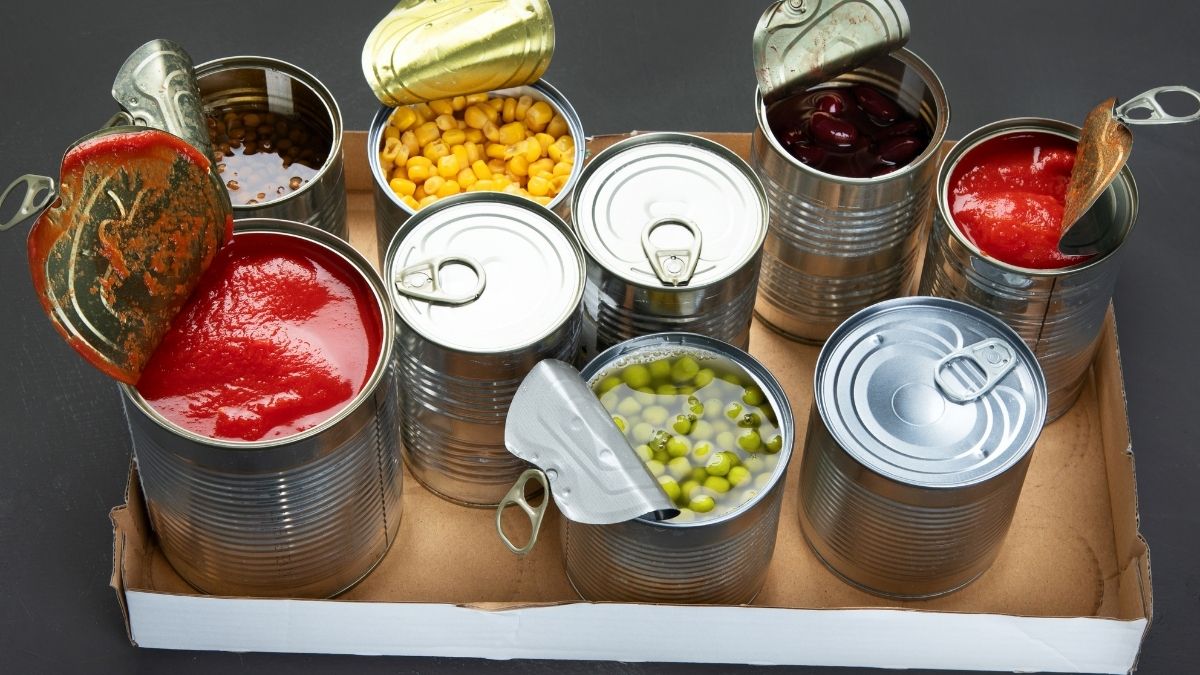
Soup feels like health food. But most canned soups are sodium bombs waiting to explode your blood pressure.
One cup of canned chicken noodle soup contains 940 mg of sodium. But here’s the sneaky part – most cans contain 2.5 servings. Eat the whole can (which many people do), and you get 2,350 mg. That’s more sodium than you should have in an entire day.
Campbell’s Chunky soups can hit 1,200 mg per serving. Even “healthy” brands like Amy’s organic soups often contain 700-800 mg per cup.
Better choices: Make soup in your slow cooker. Throw in vegetables, low-sodium broth, and lean protein. Freeze portions for quick meals.
Look for soups labeled “low sodium” with less than 300 mg per serving. Pacific Foods and Imagine Foods make some good options.
Money-saving tip: Buy generic low-sodium broth and add your own vegetables and seasonings.
3. Frozen Dinners
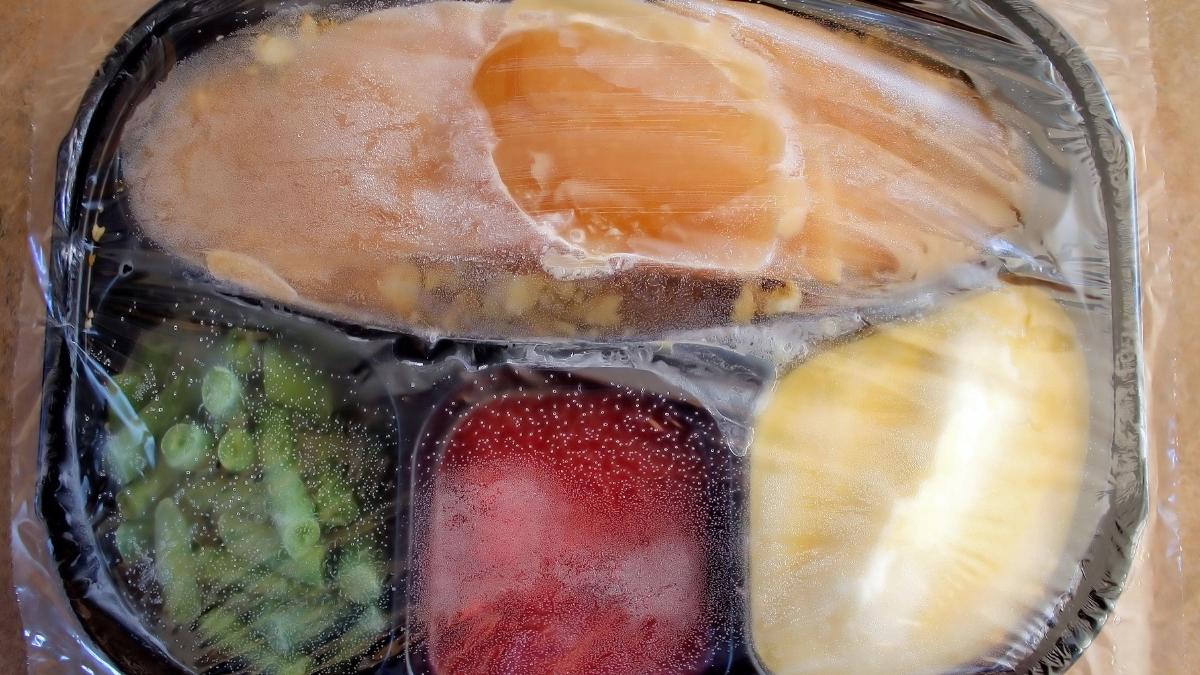
Frozen dinners promise convenience. They deliver sodium overload instead.
A typical frozen dinner contains 800-1,400 mg of sodium. Healthy Choice meals average 600 mg. Stouffer’s can hit 1,200 mg. Even Weight Watchers Smart Ones pack 700-900 mg.
The portions look reasonable on the package. But they’re often smaller than what you’d normally eat, making the sodium concentration even higher per satisfying meal.
Better choices: Spend Sunday afternoon preparing meals for the week. Cook brown rice, roast vegetables, and grill chicken. Store in containers.
If you must buy frozen meals, choose ones with less than 400 mg sodium and add your own vegetables.
Time-saving trick: Keep frozen vegetables without sauce in your freezer. Add them to any meal for extra nutrition and volume.
4. Pickled Foods
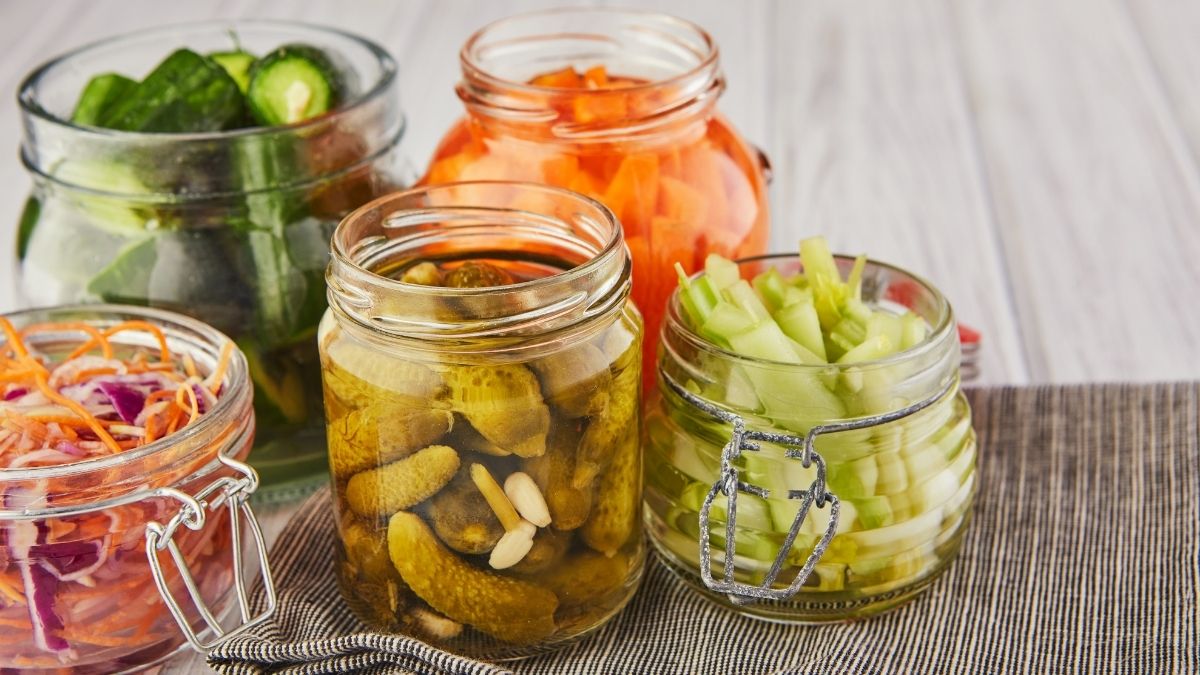
Pickles, olives, and sauerkraut seem like healthy choices. But the pickling process turns low-sodium vegetables into salt mines.
One large dill pickle spear contains 380 mg of sodium. Five green olives add 310 mg. A half-cup of sauerkraut delivers 460 mg.
Traditional pickling uses salt brine to preserve food and create that tangy flavor. The vegetables soak up sodium like sponges. Even “reduced sodium” pickled foods often contain 200-300 mg per serving.
Better choices: Make your own quick pickles using less salt and more vinegar or lemon juice. Cucumber slices in rice vinegar taste fresh and tangy.
Look for fermented vegetables in the refrigerated section. They often have less sodium and provide probiotics.
Smart swap: Replace pickles on sandwiches with fresh cucumber slices and a sprinkle of dill.
5. Restaurant Pizza
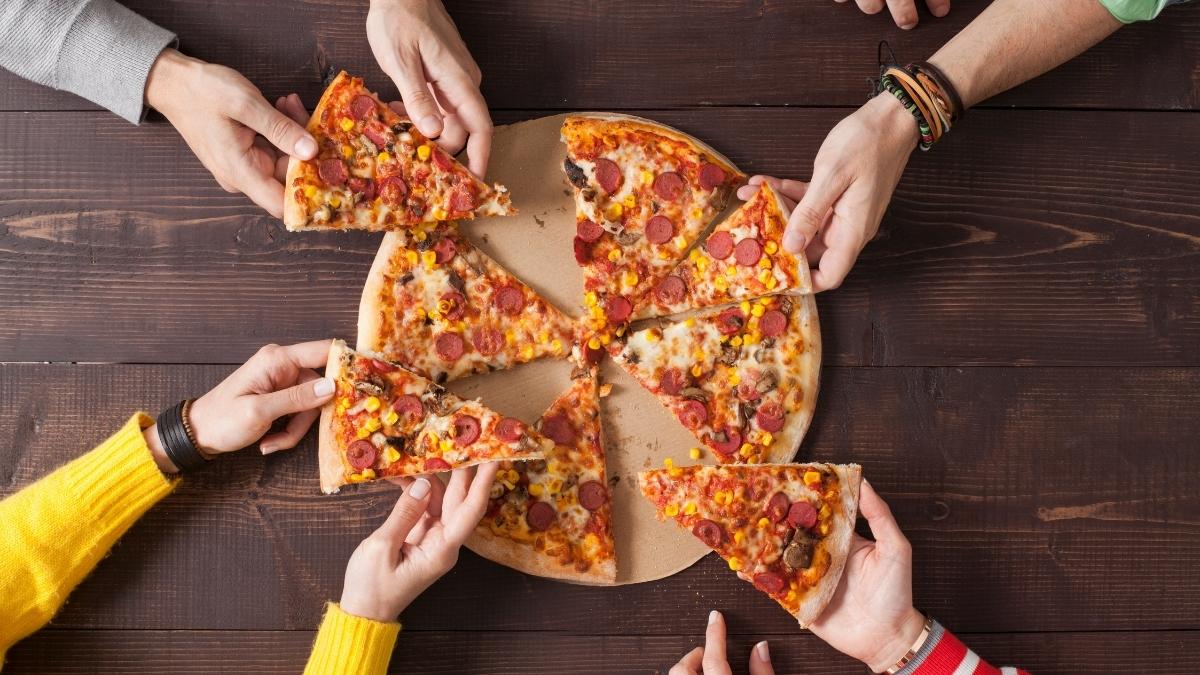
Pizza combines three high-sodium ingredients: processed meat, cheese, and sauce. Restaurant pizzas are the worst offenders.
Two slices of pepperoni pizza from Pizza Hut contain 1,200 mg of sodium. Domino’s large pepperoni delivers 1,080 mg per two slices. Even “healthier” options like vegetable pizza clock in around 800-900 mg.
The cheese alone provides 200-300 mg per slice. Pizza sauce adds another 150-200 mg. Processed meats like pepperoni, sausage, and ham can contribute 400-500 mg per serving.
Better choices: Make pizza at home using whole wheat pita bread or cauliflower crust. Use low-sodium marinara sauce and part-skim mozzarella.
Fresh vegetables like bell peppers, mushrooms, and onions add flavor without sodium. Skip the processed meats.
Restaurant strategy: Order thin crust, ask for light cheese, and load up on vegetables. Limit yourself to two slices and pair with a large salad.
6. Salted Nuts and Snacks
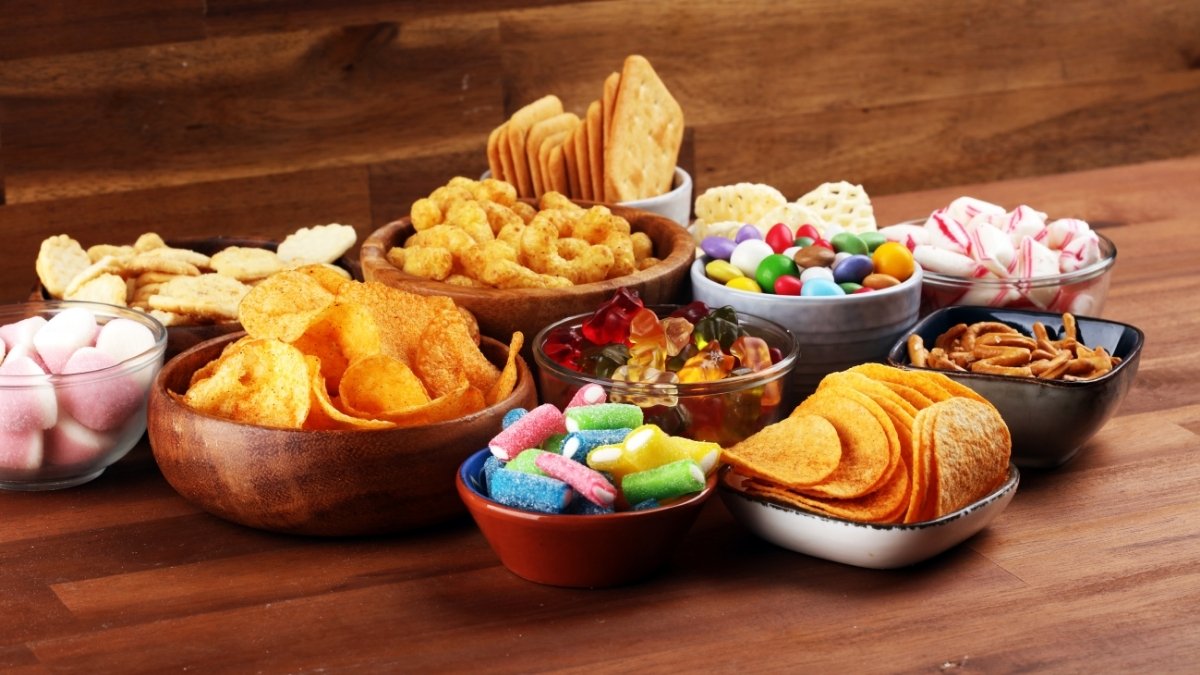
Nuts are healthy. Salted nuts are sodium traps disguised as health food.
One ounce of salted peanuts (about 28 nuts) contains 230 mg of sodium. Salted almonds have 180 mg per ounce. Trail mix with salted nuts can hit 300 mg per quarter-cup serving.
The problem gets worse because nuts are easy to overeat. The bag says “one ounce serving,” but most people eat 2-3 ounces while watching TV or working.
Flavored nuts are even worse. Honey roasted peanuts pack 260 mg per ounce. BBQ flavored almonds can contain 300+ mg per serving.
Better choices: Buy unsalted nuts and roast them yourself with herbs and spices. Garlic powder, paprika, and black pepper add flavor without sodium.
Pre-portion nuts into small containers. This helps control both calories and sodium.
Flavor trick: Toss unsalted nuts with a tiny amount of olive oil and nutritional yeast for a cheesy taste without the salt.
7. Energy and Sports Drinks
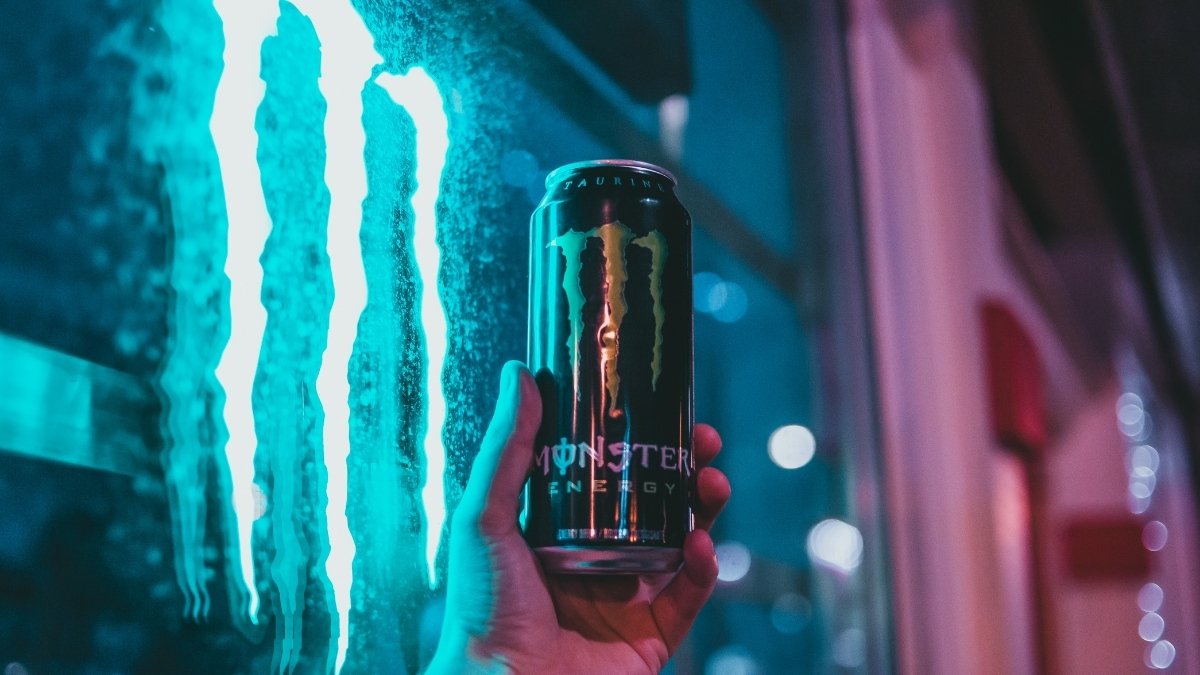
Energy drinks promise better performance. They deliver blood pressure spikes instead.
One 16-ounce energy drink contains 200-400 mg of sodium plus 150-300 mg of caffeine. This combination can cause rapid blood pressure increases, especially dangerous for people over 40.
Sports drinks aren’t much better. A 20-ounce Gatorade has 270 mg of sodium. Powerade contains 250 mg per bottle.
The caffeine and sodium work together to stress your cardiovascular system. Caffeine makes your heart pump harder while sodium makes your body retain more fluid. This double-whammy can spike blood pressure for hours.
Better choices: Plain water meets most hydration needs. For longer workouts, try coconut water, which has natural electrolytes and only 60 mg of sodium per cup.
Green tea provides gentle caffeine without the sodium overload.
Homemade option: Mix water with a splash of 100% fruit juice and a pinch of salt if you really need electrolyte replacement.
8. Condiments and Sauces

Small amounts of sauce can destroy your daily sodium budget. Most people underestimate how much they use.
One tablespoon of soy sauce contains 1,000 mg of sodium. That’s nearly half your daily limit in one small serving. Teriyaki sauce has 690 mg per tablespoon. Even “lite” soy sauce packs 550 mg.
Ketchup seems innocent at 160 mg per tablespoon. But who uses just one tablespoon? Three tablespoons on your burger adds 480 mg – and that’s before counting the burger, bun, and other toppings.
BBQ sauce delivers 280 mg per tablespoon. Hot sauce ranges from 100-200 mg per tablespoon. Salad dressings average 200-400 mg per two-tablespoon serving.
Better choices: Make your own sauces using herbs, spices, vinegar, and citrus. Fresh salsa with tomatoes, onions, and cilantro beats store-bought versions.
Use mustard instead of mayo – it has only 55 mg per tablespoon. Lemon juice and olive oil make simple, low-sodium salad dressing.
Portion control: Measure condiments instead of pouring freely. Use small spoons for sauce portions.
9. Processed Cheese

Cheese naturally contains some sodium. Processed cheese contains shocking amounts.
Two slices of American cheese contain 460 mg of sodium. String cheese has 200 mg per stick. Cheese spreads and cheese products can hit 300-400 mg per serving.
Processing requires extra sodium to melt the cheese smoothly and preserve it longer. Manufacturers add sodium phosphates, sodium citrate, and other sodium-based chemicals.
The calcium in cheese should help lower blood pressure. But the high sodium content often cancels out this benefit. Your body needs a good calcium-to-sodium ratio for healthy blood pressure.
Better choices: Buy real cheese and grate it yourself. Fresh mozzarella, Swiss, and cheddar have much less sodium than processed versions.
Part-skim ricotta contains only 50 mg of sodium per quarter-cup. Use it in place of cream cheese or cheese spreads.
Smart shopping: Read labels carefully. Look for cheese with less than 200 mg of sodium per serving.
10. Baked Goods and Pastries
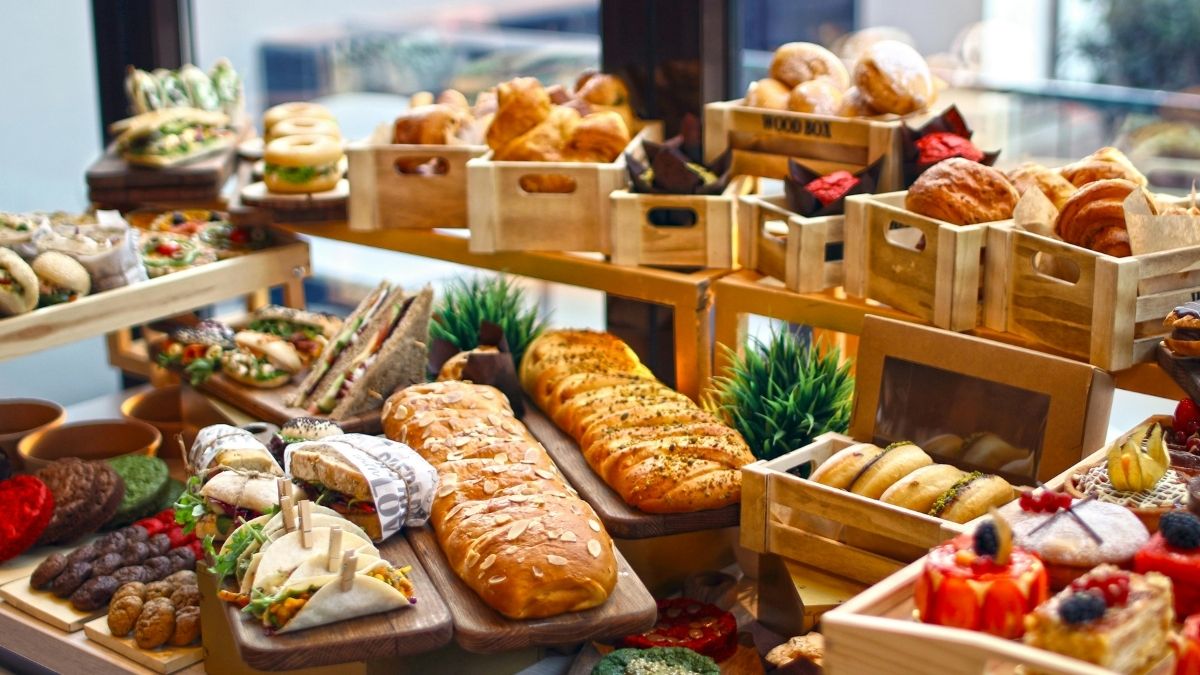
Sweet foods hide surprising amounts of sodium. Your taste buds focus on sugar and miss the salt.
One large bakery muffin contains 400-600 mg of sodium. A frosted donut has 280 mg. Two slices of banana bread add 320 mg to your day.
Baking powder and baking soda are sodium-based. Commercial bakers use extra to ensure consistent rising and texture. They also add salt to balance sweetness and enhance flavor.
Many baked goods contain butter or margarine with added salt. The combination of sweet and salty flavors makes these foods highly addictive.
Better choices: Bake at home using unsalted butter and reducing salt in recipes by half. Most baked goods taste fine with less sodium.
Choose whole grain options when possible. The fiber helps slow sugar absorption and may help lower blood pressure.
Healthy swaps: Replace frosted pastries with fresh fruit and a small amount of nuts. Satisfy sweet cravings with naturally sweet foods.
11. Alcohol (Excessive Amounts)
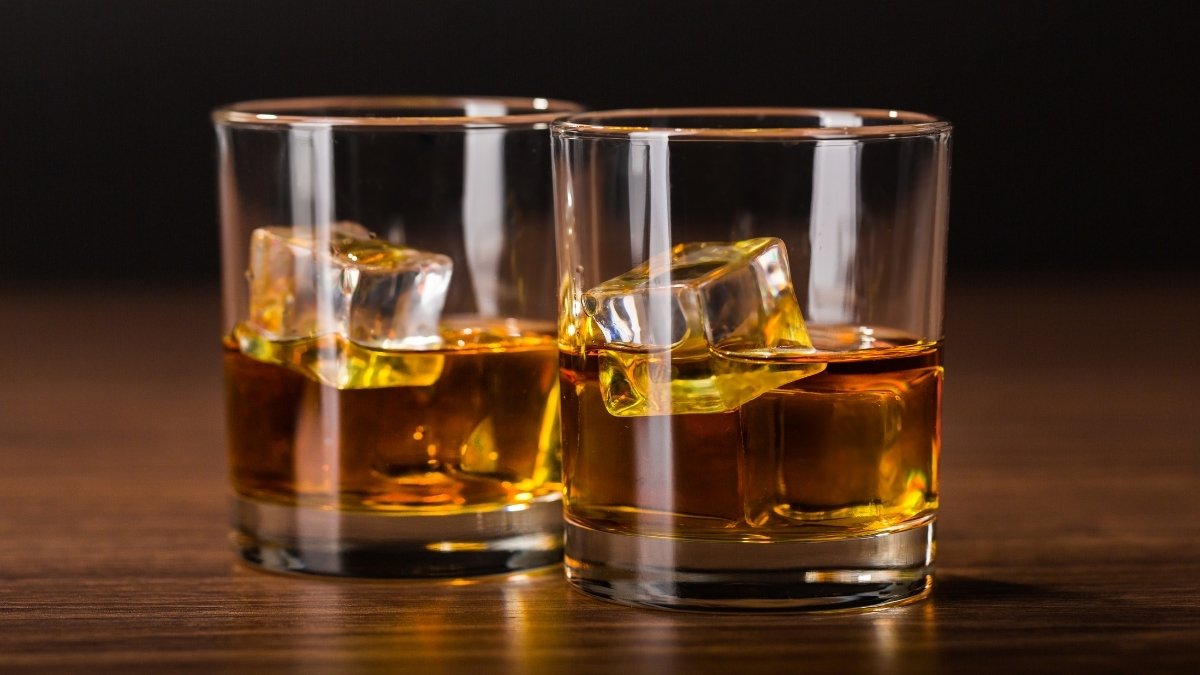
Moderate alcohol might help your heart. Too much alcohol definitely hurts your blood pressure.
More than two drinks per day for men (one for women) can raise blood pressure significantly. Binge drinking – four or more drinks in two hours – causes dangerous spikes.
Alcohol affects blood pressure in several ways. It stimulates your nervous system, making your heart beat faster. It also interferes with the hormones that control blood pressure.
Regular heavy drinking can permanently damage your cardiovascular system. Your heart muscle weakens, and your blood vessels lose flexibility.
Better choices: Stick to recommended limits – no more than 14 drinks per week for men, 7 for women. Have at least two alcohol-free days weekly.
Choose lower-sodium options like wine or plain spirits with soda water and lime.
Talk to your doctor: If you take blood pressure medication, ask about safe alcohol limits. Some medications require complete alcohol avoidance.
Your Next Steps
High blood pressure over 40 is serious, but you can control it. Start by removing the worst foods from your daily routine.
Focus on fresh, whole foods. Cook more meals at home where you control the salt. Read labels and choose products with less than 300 mg of sodium per serving.
Remember: small changes add up. Switching from regular to low-sodium versions of your favorite foods can cut 1,000+ mg of sodium from your daily intake.
Your blood pressure will thank you, and your future self will too.
🍎 Smart Food Swaps for Better Blood Pressure
Simple changes, powerful results
DASH Diet Food Swaps
High refined carbs
More fiber & nutrients
Processed grains
Better blood flow
Blood sugar spikes
Steady energy
Check sodium content first. Avoid foods with salt in the first 3 ingredients.
Stick to store edges for fresh foods. Center aisles have processed options.
Sunday prep saves time and health. Cook big batches of healthy staples.
Use herbs, spices, garlic powder, and lemon juice instead of salt.
🩺 When to Call Your Cardiologist
Important timing for diet changes
Call Immediately If You Experience:
- Chest pain or pressure
- Severe headaches
- Trouble breathing
- Dizziness after diet changes
- Weakness or fatigue
Medication & Diet Interaction
🎯 Your Blood Pressure Success Plan
Take control of your heart health after 40
Quick Results
See improvements in just 2 weeks
Simple Swaps
Small changes create big results
Better Life
More energy, better sleep, less worry
Expert Guidance
Work with your cardiologist
🎯 Your Action Plan This Week
Eliminate 1 problem food
Start daily BP monitoring
Plan next week’s swaps
Remember: You’re Not Just Changing What You Eat
You’re changing how you live. Better blood pressure means a longer, healthier life with the people you love.

